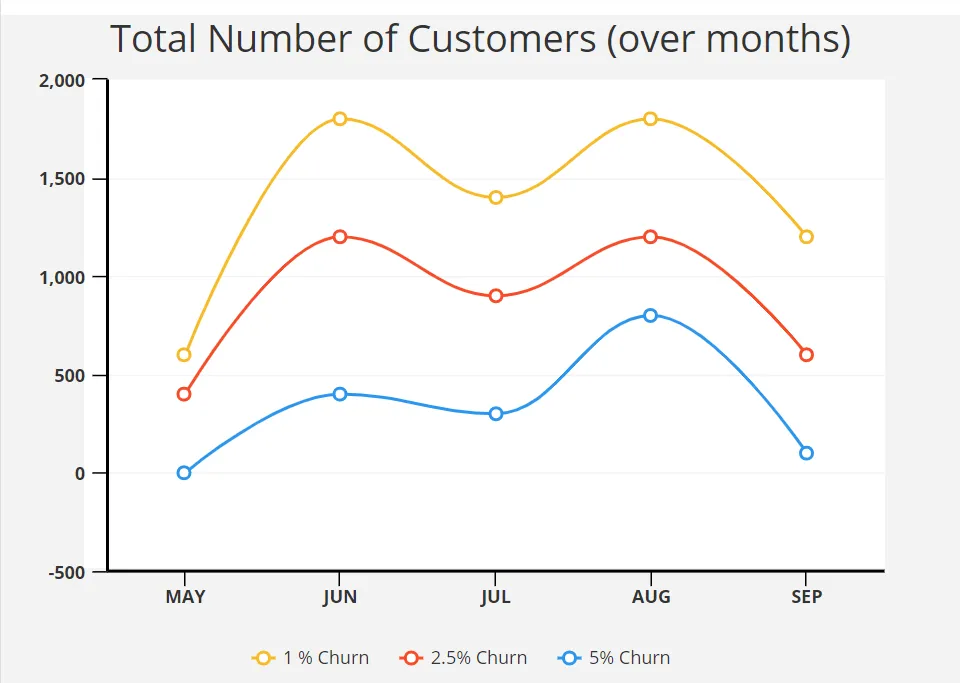How Customer Success Impacts Business Growth

For newer organizations, hiring a customer success manager (CSM) isn’t always a priority. Between establishing a go-to-market plan and building a sales team, it’s no surprise that customer success isn’t usually an initial focus. This, combined with the fact that CS is a newer discipline, means that the concept of customer success is largely new for a majority of companies. As a result, both new founders and seasoned corporate leaders alike often struggle to make the case for hiring their first CSM.
Unlike sales and product teams, the impact of a customer success manager isn’t always as clear-cut. For teams with limited budgets or resources, it’s hard to make the case internally.
Despite this, it’s important to be aware of the immense value customer success can provide. Here are a few reasons why a CSM is one of the most powerful hires you can make, regardless of where your company is in its growth journey.

Table of Contents
Establish a Customer-Driven Culture From the Very Start
It’s important that a customer-centric attitude is cemented across your entire organization, irrespective of employee teams or departments. From your newest hire to your CEO, every team member should be focused on the success of your customers. While we often think of corporate culture as a cool office-space or colleagues who you spend time with after work, a powerful corporate culture is made up of much more than that.
Unlike other roles, customer success managers work with nearly every internal stakeholder. From communicating feedback to the product team to working with sales to identify your ideal customer profile, CSMs have the unique opportunity to interact with nearly every team. It’s little surprise that this can have a significant impact on creating a customer-oriented corporate culture.
As a result, a customer-first approach often rubs off on roles that may not necessarily be client-facing. This is one such way that CS serves as an internal driver for growth. Through effective communication of customer feedback and challenges to those at the top of the customer funnel (sales and marketing), customer success managers are able to help position customers for success even before the customer relationship has been handed off from sales to CS.
Other tactics, like holding company town halls where customer success victories are shared, can be just as effective when sharing this key feedback. Some organizations even use a company-wide Slack channel to ‘brag’ about positive customer outcomes. Above all, remember that a customer-driven culture can only be fostered when discussions about CS are taken out of the boardroom and shared company wide.
It’s clear that a CSM’s cross-functional work can pay immense dividends when it comes to fostering a customer success-driven culture. When Check out our latest webinars , be sure to establish an employee structure where CS collaborates with other employees.
Doing so ensures that everyone is encouraged to align with customer success. A CSM not only enables this cross-pollination but signals your company’s commitment to setting customers up for success from the start.
Increase Retention (and Conquer Your Churn)
Customer success is commonly associated with churn – a word that strikes fear in the hearts of any SaaS leader.
Customer churn is the percentage of customers that stopped using your product or service within a given timeframe. For example, if you started out with 200 customers and only had 180 by the end of the quarter, your churn rate would be 10%. Minimizing your churn is key to the long-term success of nearly all businesses.
While customer success is much more than retention, its value is often highlighted by the profound impact that a CSM can have on decreasing churn. Small reductions in churn can have significant impact on your bottom line. It’s for this reason why customer success has been called The New Growth Driver.
As a result, the case for customer success is often economic. As the adage goes, the cost of acquiring new customers is significantly more expensive than retaining current clients.

In fact, acquiring a new customer can cost five times more than retaining an existing customer. Even more exciting is the fact that according to research, just a five-percent increase in customer retention can increase profits by 25 to 95 percent.
Statistics like these are what make customer success a logical next step for any fast-growing subscription business.
While it has been argued that churn can be offset by upsells, avoid falling into this trap. Remember: Customers typically churn because of poor product fit. If there is little customer fit, existing customers will have little interest in increasing their investment.
Cultivate Customer Advocacy and Drive Referrals
By acting as a trusted advisor, customer success can identify gaps in the customer experience while helping to cultivate healthy customers. Like CS, customer advocacy has become a revenue driver for SaaS companies. Vocal customers who help sell your product are one of the most powerful tools for any business.
For many organizations, customer advocacy is an end goal for their customer success and customer experience efforts. While some companies choose to separate this function from CS, driving customer advocacy is best established as a goal of every customer-facing team. Whether sales, marketing or customer success, every member of your team should understand their impact on driving advocacy.
Customer success in particular is uniquely positioned to help guide your customers through this journey. A CSM’s role as a client partner has the ability to turn a once shaky client into a product evangelist. By focusing on the relationship and leading your client to success, CSMs are afforded the ability to directly influence customer advocacy efforts.
Leverage Feedback and Define Your Product Roadmap
CSMs are exposed firsthand to the challenges and victories their customers experience. Whether dealing with complaints or compliments, a CS team has a front-row seat to what success (and failure) can look like.
Besides making these firsthand observations, a customer success manager is also on the receiving end of constructive feedback. Through the use of both solicited and unsolicited feedback, CS can provide valuable data to your entire organization.
Since customer success managers thrive in a relationship-driven world, their days consist of countless customer-facing interactions. Whether on the receiving end of a customer’s frustrations or victories, CSMs have direct insight to the ways that customers use your products.
Data from surveys, customer calls, and even training sessions all provide insights into user sentiment. While it’s sometimes easy to overlook these factors, they contain immense value. Feedback such as this not only allows you to keep your customer on track but enables you to discover new use cases and potential product enhancements.
Weekly meetings between your customer success and product teams are one such way to flush out this customer feedback. Consider how customer feedback, both good and bad, fits into the larger picture.
Perhaps other customers are experiencing the same challenges or could benefit from certain use cases. Although it’s unlikely that you’ll be able to respond to every customer request, this information should not be taken lightly. Communicating customer feedback to your team is an exceptional way to build a better product and further align your CS and product teams.

Hire a CSM Today for Future Success
While internal resources may be precious, customer success can have a profound impact on any organization, young or old. In fact, customer success should be a top priority for any subscription business. The proper use of metrics and automation, along with fostering a customer-centric culture, has the power to position CS as a driver for growth.
By hiring a customer success manager, your business will not only create meaningful customer relationships today but will position your customers for success well into the future.
Looking for more tips on maximizing your Customer Success efforts? Visit the Fighting Churn Blog for more tips on turning every customer experience into an exceptional experience.

